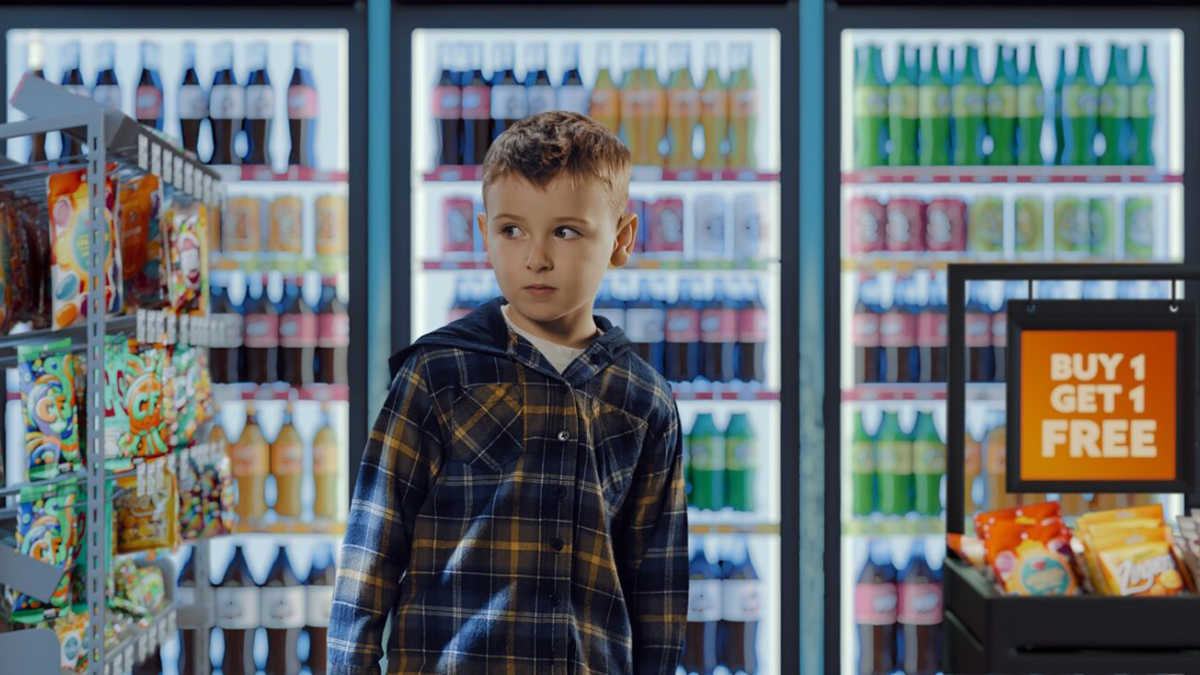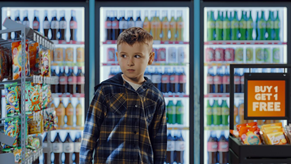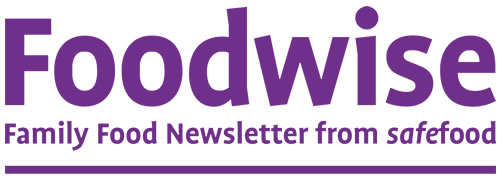What is the Food Environment?

Ever leave a shop with snacks you didn’t mean to buy? Or end a seaside walk with a coffee and a bun?
It's because of the food environment - the food that surrounds us.
The food environment shapes what food we buy and eat. It's the places where we make decisions about food including where we live, work and come together. It depends on the food and drink that’s available, affordable and advertised to us.
- What is the food environment?
- Our children’s health
- Where we live matters
- How we can build a healthy food environment
What is the food environment?
The food environment is the food that surrounds us. It is the food and drink that is available, affordable and advertised to us.
It includes:
- What’s sold in shops, cafes and restaurants
- What’s advertised on TV, radio, social media and billboards
- What’s available in schools, sports centres, and children’s play centres
Today our food environment is overflowing with unhealthy options, and that’s affecting our health.
What is unhealthy food?
Unhealthy food is food that is:
- high in salt, sugar and fats
- low in fibre
Think: sugary drinks, pastries, crisps, sweets, chocolate and deep-fried food.
An unhealthy diet increases our risk of food-related illnesses like Type 2 diabetes, heart disease and many common cancers.
Food-related illness is now the biggest cause of preventable illness and death. Over 3 in 5 men and one in 2 women are living with overweight or obesity.
Our food environment
People today don’t have less willpower, bigger appetites or different biology than previous generations. What’s changed is our food environment.
‘Once you pop, you can’t stop’ is more than just a slogan. Our bodies seek food that is high in calories, like sugary, salty and fatty food. Unhealthy food is created by food companies to be “moreish”, making it very easy to eat too much of it. And our food environment pushes us to eat unhealthy food at every turn. Like:
- Unhealthy snacks all along the queue for the checkout.
- Main streets swamped with takeaways and fast-food outlets.
- Supermarket shelves full of special offers for unhealthy food and drink.
- Non-stop marketing across TV, radio, billboards and online.
Our children’s health
On the island of Ireland,
- One in 4 children in Northern Ireland
- One in 5 children in Ireland
are growing up at risk of food-related ill health and a higher risk of early death in adulthood. The lifetime cost of childhood obesity on the island of Ireland is over €7.2 billion.
Why it matters that children see unhealthy food around them
The World Health Organization (WHO) says that exposure to unhealthy food advertising is linked to food-related illness in children. And our children are surrounded by junk food almost everywhere they go.
- Bright colourful sweets and snacks put right in their eyeline in shops.
- Ads for sweets and fast food on bus shelters, billboards, TV and their phones.
- Sports centres and play areas sell sugary snacks and drinks.
- Junk food linked to cartoon characters, YouTubers, movies, influencers and sports to make them desirable.
Is it any wonder that amost a quarter children's meals include unhealthy food? And the WHO says 85% of food produced by 18 of the largest food and drink companies should not be marketed to children.
Eating out with kids
When families eat out, children are routinely offered unhealthy options:
- Fried chicken and chips
- Sausage and chips
- Burger and chips
- A single pasta dish.
In Northern Ireland
Where we live matters
Some areas don’t have many shops or restaurants that sell fresh, healthy food. These areas are known as ‘food deserts’ – and many of them are in less well-off areas. These areas tend to have even more fast-food outlets and convenience stores.
For example, in Dublin disadvantaged areas have more takeaways and fewer supermarkets than more privileged areas.
That means, for many of us it is cheaper and easier to buy unhealthy food.
Healthier options are usually much more expensive. In fact, buying healthy food can cost some of us a third of our weekly income.
- In Ireland households on low incomes need to spend up to 32% of their take-home income to buy a healthy food basket.
- In Northern Ireland households on low incomes need to spend up to 45% of their take-home income to buy a healthy food basket.
Why unhealthy food is hard to avoid
Unhealthy food is designed to taste good, be widely available and easy to prepare.
It’s also 3 times cheaper for food businesses to produce than healthy food.
In the UK, two-thirds of food and drink sales by global food businesses come from unhealthy food.
The food industry works hard to shape our decisions.
- Giving unhealthy foods a “health halo” – like sugary cereals “now with added vitamins”
- Tapping into our emotions – like using the pride we feel in our local women’s football team to sell chocolate.
- Creating eating occasions – like promoting share bags and munch boxes for family movie nights
- Special offers like “Buy one get one free” – more than a third of special offers are for unhealthy food
- Packaging that makes eating bigger portions normal, such as family packs of chocolate bars
Even when shopping, supermarket layouts are designed to encourage impulse buys.
- Filling the most visible areas in our supermarkets with unhealthy food.
- Placing the same item in different areas around the shop increases the chance we’ll buy it.
- Fruit and vegetables as you walk in to make us feel healthy, meaning we're more likely to buy unhealthy food as we go round the shop
- Milk and dairy further away, so we walk through tempting aisles.
We might think supermarkets make money from selling food and products. Actually, they make more money from selling shelf-space and floor-space to brands.
- End-of-aisle displays –they interrupt our shopping journey, so we’re more likely to buy products placed there.
- Pallet displays - force us to walk around stacks of Easter eggs, cola or chocolate tins.
- “Touch level” - brands pay more to have their products where they’re easier to see. Unhealthy food is 16 times more likely to be placed here.
- “Stoop level” - brands aimed at children pay more for lower shelves, so they’re at children’s eye-level.
- Even the name of the aisle influences how we think - “breakfast cereals” seems healthy even though many are so sugary they should be in the dessert aisle.
How we can build a healthy food environment
Our unhealthy food environment is affecting our children’s health. This must change. We need to build a food environment that makes healthy eating possible and affordable for everyone.
Options that will help create a healthy food environment include:
- Changing our local food environment so that sports clubs, community centres and local events serve healthy food.
- Ensuring the same healthy food standards are followed by all public bodies, from hospitals to schools and care centres.
- Supporting restaurants and takeaways to improve children’s menus.
- Introducing store layout regulations, like in the UK, to cut back on unhealthy food marketing in supermarkets.
- Exploring unhealthy food marketing restrictions on public transport.
- Strengthening media codes to protect children from unhealthy food marketing across media platforms from TV to social media.
- Rolling out hot meals to all primary schools, early learning and care settings.
Where can we start?
Become more aware of how food is marketed to us and how we’re pushed towards unhealthy choices.
Visit our YouTube channel to watch our experts talk about the food environment.
YouTube playlists
- Our current food environment
- Food companies and supermarket marketing tactics
- Real life food environment
- How marketing influences our behaviour
- How unhealthy food can impact on our health
Then talk with friends and family about what a better food environment could look like in your community and what you would like to see change.
Be part of the change
Follow the #TalkAboutFood conversation on the Safefood social channels.
Sign up below to get updates on building a healthier food environment.




